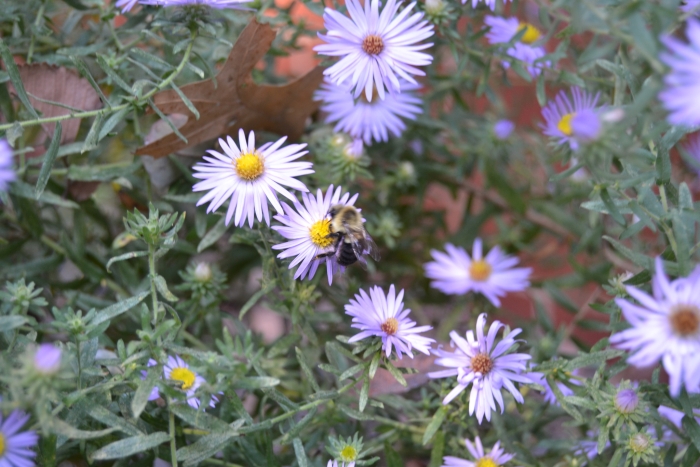Aromatic Aster
(Symphyotrichum oblongifolium)
Aromatic Aster (Symphyotrichum oblongifolium)
/
/

stlmark
Public Domain




































Estimated Native Range
Summary
Aromatic Aster is valued for its late-season blooms, which provide color in the garden when many other plants have finished flowering. It is drought-tolerant once established, making it suitable for xeriscaping and naturalistic plantings. This aster is often used in borders, wildflower gardens, and as a ground cover. It thrives in full sun but can tolerate light shade and prefers well-drained soil. While generally pest-free, it can occasionally suffer from powdery mildew in humid conditions. Aromatic Aster is not known for being invasive and is a low-maintenance addition to the garden.CC BY-SA 4.0
Plant Description
- Plant Type: Perennial herbs
- Height: 1-3 feet
- Width: 1-3 feet
- Growth Rate: Moderate
- Flower Color: Blue, Purple
- Flowering Season: Summer, Fall
- Leaf Retention: Deciduous
Growth Requirements
- Sun: Full Sun
- Water: Low, Medium
- Drainage: Medium
Common Uses
Bee Garden, Bird Garden, Border Plant, Butterfly Garden, Drought Tolerant, Erosion Control, Fragrant, Groundcover, Low Maintenance, Rock Garden, Showy Flowers, Street Planting
Natural Habitat
Native to prairies, dry open woods, and rocky slopes in the Central and Eastern United States
Other Names
Common Names: Oblong-Leaf Aster , Shalebarren Aster , Doftaster , Oblong-Leaved Aster
Scientific Names: Aster oblongifolius , Symphyotrichum oblongifolium , Aster oblongifolius var. rigidulus , Virgulus oblongifolius , Aster oblongifolius var. angustatus , Aster kumleinii , Aster oblongifolius var. orientis , Aster kumleinii f. roseoligulatus , Aster graveolens , Lasallea oblongifolia
GBIF Accepted Name: Symphyotrichum oblongifolium (Nutt.) G.L.Nesom